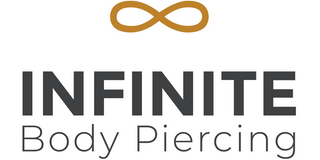The industrial piercing is really two piercings in one: an outer helix piercing connected to a forward helix piercing by a straight barbell. This piercing was named and popularized by Erik Dakota in the early nineties. The first reference to the industrial piercing (then termed “industrial ear project”) was in Body Play magazine in 1992, alongside the first examples of daith and rook piercings.
The initial piercing is usually done with a barbell. (Using separate jewelry for healing can result in different angles when trying to connect the piercings later.) 14 gauge is usually the starting thickness, with length ranging anywhere from 1 1/8” to 1 3/8”, depending on the ear. While popular, this piercing doesn't work for all ears, as you need to have a defined helix, or ear “ridge,” and enough space for the barbell to sit unobstructed. If you’re interested in this piercing, we suggest coming in and talking to one of our piercers about your options. If your ear isn't suited for an traditional industrial piercing, he or she can certainly recommend other, unique piercing options, or other "ear projects."
The healing time for industrial piercings is six months to a year. Like with other cartilage piercings, we can do multiple cartilage piercings on the same ear in the same sitting, but we will not do cartilage piercings in both ears at the same time (you need one ear to sleep on, use to talk on the phone, etc.). You'll need to wait until all piercings on the first ear are fully healed before getting the second side done or any other cartilage piercings on the opposite ear.
















